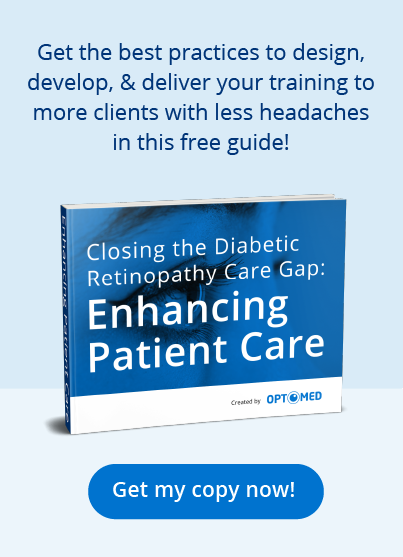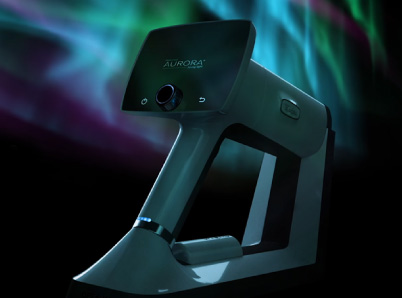Using Technology to Prevent Blindness
Vision loss is associated with diminished quality of life, poor psychosocial wellbeing, and an increased risk of mortality. When diabetes is involved, blindness predicts an increased risk of other diabetic complications as well.
Diabetic retinopathy is the leading cause of vision loss in adults aged twenty to seventy-nine, despite the fact that timely treatment can prevent 90% of cases. Because there are no outward symptoms, screenings are essential for detecting signs of diabetic retinopathy before vision is affected.
Thirty-five percent of diabetics are estimated to have some degree of diabetic retinopathy, with almost 10% experiencing vision-threatening levels. A projected 642 million people worldwide will have diabetes by the year 2040. At this rate, 2,000 eye examinations per minute would be required to meet the recommendation for each diabetic.
Ophthalmologic clinics are already overburdened by the current need, with most diabetics not meeting minimum screening recommendations. Fortunately, technology has advanced to the point where screening for diabetic retinopathy no longer needs to occur in an ophthalmologic setting.
The Advantages of Mobile Fundus Cameras
Mobile fundus cameras have been improving and evolving to the point where some, such as Optomed’s Aurora, now offer exceptional image quality, a minimal learning curve, and a full 50-degree field of view, which is optimal for the detection of sight-threatening diabetic retinopathy. Because of these advantages, along with its portability and non-mydriatic operation, this technology has a real capacity for changing the face of diabetic retinopathy screening and eliminating unnecessary vision loss related to diabetic retinopathy across the globe.
The Global Movement against DR Blindness
The global movement to eradicate blindness due to diabetic retinopathy depends on several essential advantages of telemedicine: remote acquisition of retinal images, easy transferral of those images, and centralized evaluation of the images. Routine eye care is paramount in this effort. By integrating regular screenings for diabetic retinopathy into primary care settings, compliance rates and outcomes can improve.
This has been demonstrated in certain localized areas, where rates of blindness due to diabetic retinopathy are declining due to concerted efforts to educate and increase screening compliance. The introduction of mobile technology capable of capturing high-quality retinal images has been key in these movements. Screeners can meet patients where they are, rather than rely on the patient to overcome financial, travel, health, and other barriers in order to report to an ophthalmology clinic, which is likely at capacity and has long waits for appointments and little ability to offer flexibility in scheduling.
Reducing blindness due to diabetic retinopathy on a global scale is possible if physicians and other medical providers work together to improve screening compliance.
Doctors Everywhere Join the Fight against Blindness
Doctors across the globe are joining the fight against vision-threatening diabetic retinopathy. While some are traveling to underserved low- and middle-income countries to help, others are learning how to take better care of the patients in their own neighborhoods. By learning new practices and adopting changing technology, physicians can make a measurable difference in preventing blindness due to diabetic retinopathy and an immeasurable difference in the lives and wellbeing of their own patients.
The Right Tools Make the Difference
With state-of-the-art technology, like the Optomed Aurora handheld non-mydriatic fundus camera, primary care physicians can do screenings anywhere their patients happen to be. While some are exploring drive-through clinics and in-home visits, others are finding that it’s quite convenient and cost-effective to offer routine eye exams with their other annual wellness checks right in the office.
The Aurora is non-mydriatic, so patients don’t have to worry about pupil dilation affecting their ability to drive after the appointment. The process takes only minutes and can be performed by paraprofessional staff with minimal training and a little practice. The camera seamlessly integrates with existing EHR software for secure, private, HIPAA-compliant performance.
The Aurora is also a cost-effective tool, with a modest upfront investment, no infrastructure costs, and little staff time lost to training. Moreover, many physicians find that related reimbursements introduce a small revenue stream into the office, making it a financially sound move.
With up-to-date equipment and technology, physicians can maintain a high standard of care for their practice. By incorporating a handheld fundus camera and routine screenings for diabetic retinopathy into their office, physicians can make a significant difference in preventing blindness for their patients and impact the global fight against vision loss due to diabetic retinopathy.
Here at Optomed, our mission is to help save the vision of millions of people. By integrating our software and artificial intelligence solutions with our camera, we enable eye screening for everyone, wherever they are. To see how we can equip you to save the sight of more patients, schedule a free consultation today!



